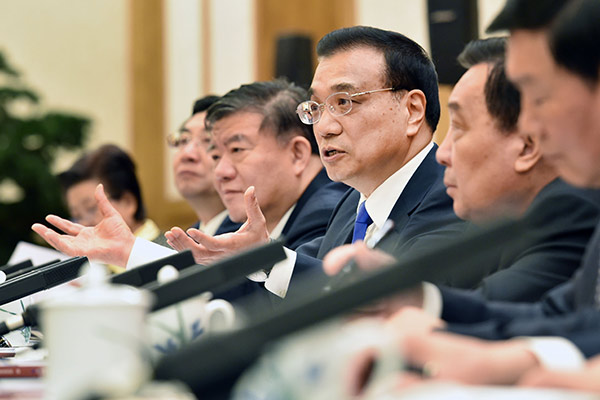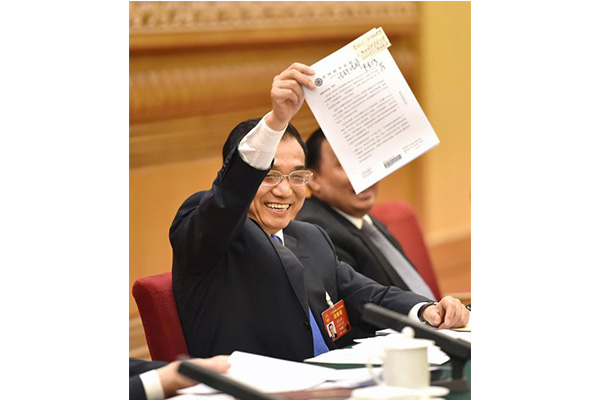
Premier Li Keqiang attends a panel discussion of National People’s Congress deputies from Shaanxi province in Beijing on March 9.
Premier Li Keqiang called for all out efforts to overcome challenges and find out how smog is formed during a meeting with delegation from Shaanxi province on March 9.
Zhou Weijian, an academician and head of the Institute of Earth Environment of the Chinese Academy of Sciences, presented her statement and suggested muti-disciplinary efforts to research the causes, development trends, impact on the environment, and control of smog that has become a major problem in north China.
In the Government Work Report delivered by Premier Li on March 5, he stressed efforts to make skies blue again, strengthen scientific studies on the formation of smog, thus producing accurate scientific targeted measures to deal with the problem, Zhou said.
“We have sent a letter on this issue to Premier Li,” she added.

“Here is the letter which I have approved!” said the Premier holding the letter high in his hand.
Zhou said that although many studies have been conducted on air pollution and general haze phenomenon, no specific study team for China’s haze pollution has been set up.
China’s haze pollution incident covers more areas and it is different from the haze pollution historically seen in London or Los Angeles, she said, adding that the composition of China’s haze is also complicated. The pollution problem in China has seasonal characteristics, meaning its intensity varies season to season.
She said their research has shown that besides coal consumption, automobile exhaust and burning of biomasses, the use of nitrogen fertilizer in North China Plain should also be controlled to decrease PM 2.5.

“You mentioned an important, but seldom raised point. The form of haze is not only affected by coal consumption, automobile exhaust and dust, but also related to agricultural pollutants, such as the overuse of nitrogen fertilizer. Is there any proof for the claim?” the Premier asked.
